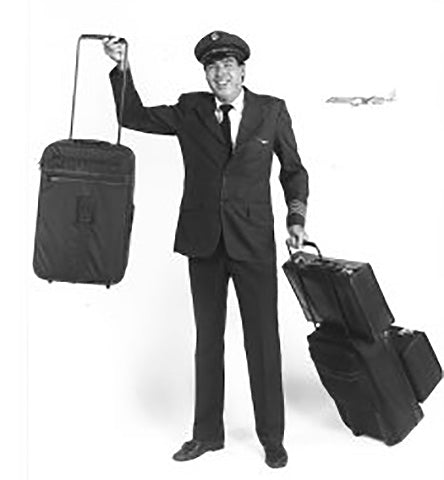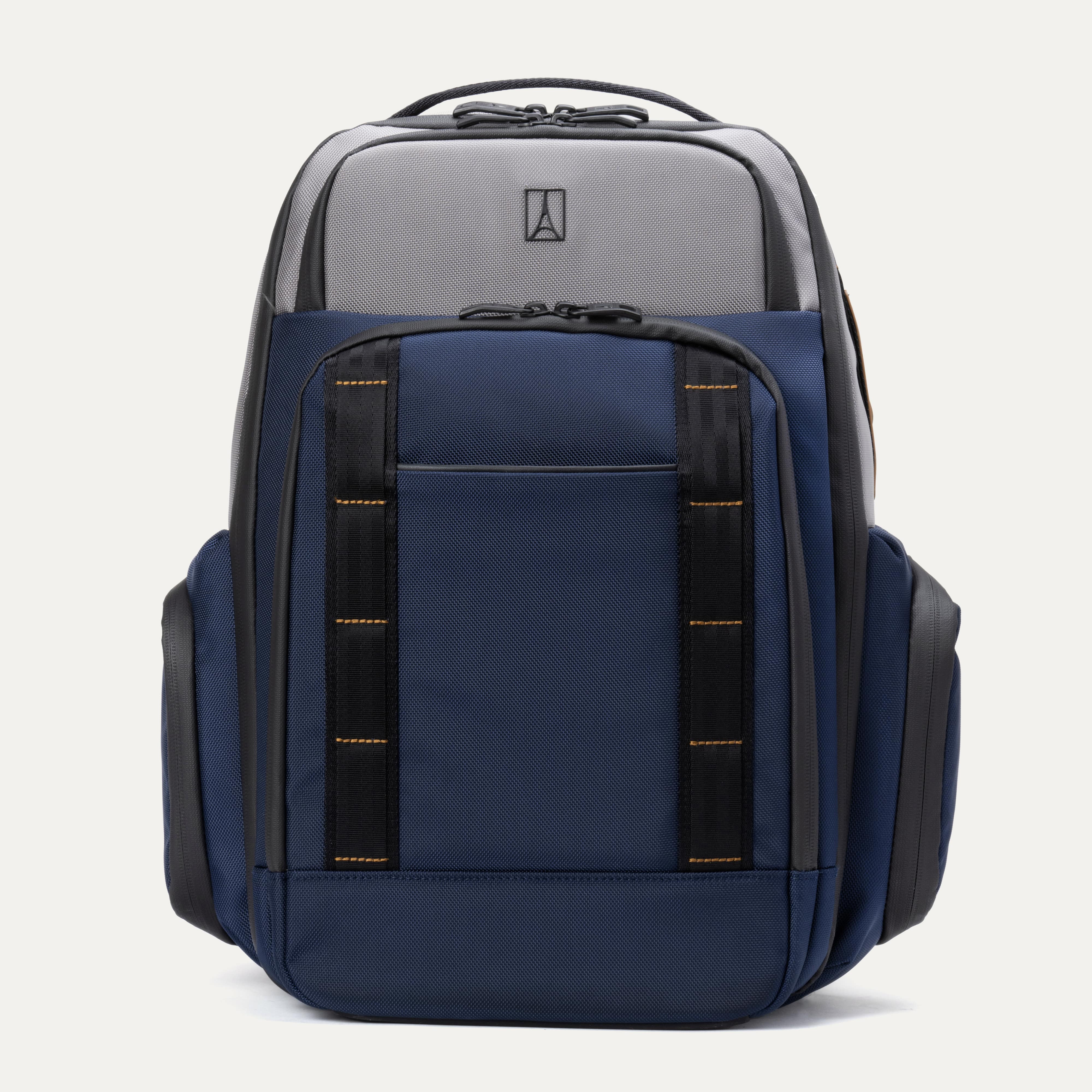2-Wheel vs. 4-Wheel Luggage

Need help on how to decide whether to buy a Rollaboard® or a Spinner suitcase? Below, we unpack the pros and cons of 2-wheeled vs. 4-wheeled luggage to help you choose the best luggage for your needs.
How well is that luggage going to help you and your stuff get where you're headed?
Decades ago, travelers lugged their wares in cumbersome trunks and shoulder-breaking suitcases. Then, commercial airline pilot and founder of Travelpro®, Bob Plath, created the original Rollaboard® luggage. Bob intended for the 2-wheeled bags to help his fellow crewmembers travel more easily, but when passengers schlepping their cumbersome old suitcases saw the wheeled luggage roll by, demand exploded.
Since then, the Rollaboard® has come a long way and wheeled luggage has easily become the most important piece of travel gear most travelers own. Today, 4-wheeled bags, also called spinner luggage, have surpassed two-wheel bags in popularity among leisure travelers. Spinner luggage is great for a lot of reasons, and the Travelpro® FlightCrew™ 5 spinner is among the best sold, highest-rated luggage on the market.

Two-Wheeled Suitcases (Rollaboard® Luggage) vs Four-Wheeled Suitcases (Spinner Luggage)
Whether a Rollaboard® or a spinner is the right bag for you is where the decision gets personal. Comfort, utility, packing needs and travel style are some of the more important factors when weighing a 2-wheeled suitcase against a 4-wheeled bag. Ultimately, how your suitcase should roll depends on how you roll.
Innovation
First, let’s address a common misconception: Spinners were created after Rollaboard® luggage, so doesn’t this mean they are better or more advanced? Simply put, no. Both types of rolling luggage have pros. The technology or innovation involved will be more about the manufacturer and the collection than whether the bag has two or four wheels.
It’s true that spinner luggage hit the market years after our original Rollaboard® luggage was invented, but both 2- and 4-wheeled bags serve their own unique purpose–which is why we continue making many types of Rollaboard® luggage today. While there are other differences, Travelpro® Rollaboard luggage is built with the same practical features and innovative technologies as its comparable spinner luggage.
Comfort and Companions
Two-wheeled suitcases are pulled behind you at an angle, rather than rolled next to you, like their four-wheeled spinner counterparts. While pulling a 2-wheeled bag, your arm is most naturally positioned down at your side with your hand holding the extension handle facing backward.

Spinners, on the other hand, are pushed and steered with your arm bent approximately 90 degrees in front of you. Pushing vs. pulling uses the muscles in your shoulders and back much differently, but smooth-rolling wheels should make either a comfortable experience.
With Rollaboards, companion bags like totes and coolers can be stacked or attached to them. Stacking additional luggage on your Rollaboard® or spinner is done exactly the same way. The stacking strap on your smaller bag fits around the extension handle of your rolling bag to secure it in place.
You can also attach travel totes and other smaller luggage to your 2-wheeled bag using a J-hook fastened to the top of the Rollaboard®. However, an add-a-bag strap to attach an additional bag on a spinner model is strong discouraged as it changes the center of gravity, which causes tipping based on the wheel orientation. 
Improper use of a spinner model may void the commercial-use warranty. Using a spinner like a Rollaboard® by pulling it instead of pushing it, can compromise the integrity of the wheel structure causing damage to the wheel system.
On the Moves
When it’s time to roll, speed is the name of the game with Rollaboard® luggage. In a two-wheel design, the wheels tend to be larger than the wheels on 4-wheel models, so they roll forward in a straight line better than 4-wheeled bags, thanks to the sheer physics of their size.
If speed is your highest priority, choose a 2-wheeled bag. Whether you are pulling your luggage through airport or train terminals, city streets or massive parking lots, a Rollaboard® is definitely the best option for helping you get from point A to point B as fast as possible.

Spinner suitcases are more about agility. Having wheels on every corner gives you 360 degrees of motion, which makes them great for zig-zagging through crowds and turnstiles at security. We take this even further with our patented MagnaTrac® self-aligning spinner wheels that keeps the luggage from drifting or pulling to either side.
When Size Matters
When it comes to overhead bins, two-wheeled bags are generally a better fit because the wheels tend to be recessed and are nearly flush with the profile of the luggage case. It’s also worth mentioning that because the recessed wheels of a 2-wheeled bag don’t protrude as much as 4-wheel spinner models, Rollaboard® wheels are less susceptible to damage and general wear and tear. That said, Travelpro® is well-known for the durability of our luggage from top to bottom, and that includes both Rollaboards and spinners, along with all of our non-rolling companion luggage.

Wheels Down
In the end, the luggage best suited is a matter of sheer personal preference, so it’s good to understand your options. Your luggage will be your constant travel companion for the long haul, so choose what meets your travel needs. The right bag should make every trip easier and more enjoyable.

